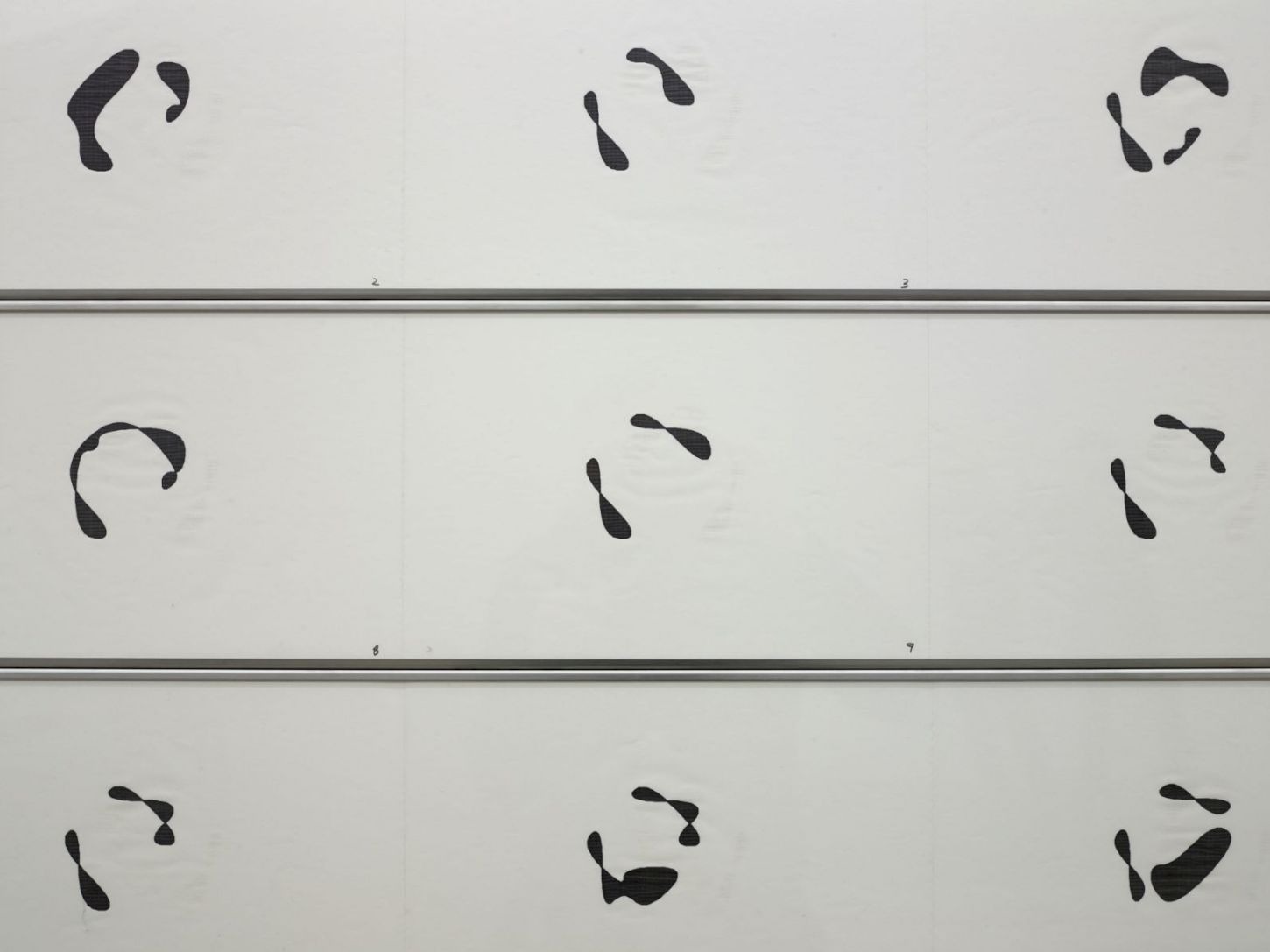Elena Asins
Machines To Change The World
15 Feb - 14 Mar 2020
ELENA ASINS
Machines To Change The World
15 February – 14 March 2020
Algorithms create a steadily growing part of our world. But we actually don't visually grasp them. The pure mathematics that take place behind the appearances of the digital age remain invisible to most people. The formal computing processes in the server halls of social media corporations and cloud service providers, the performance of the software on billions of computers, they have hardly any visual form outside the institutes and sweatshops for IT. The pure mathematics behind the operating systems of 21st century societies has no representation, no public aesthetics.
Well, no representation is slightly exaggerated. If you google it, there are all sorts of charts and diagrams, and art has also found forms to make the invisible logic of the computer age visible here and there. One of the pioneers of this art was the Spaniard Elena Asins, who died in 2015. Following the constructivist traditions of the avant-garde movement of the 20th century, the artist, writer, lecturer and critic brought together minimalist and geometric tendencies from the 1960s with the theoretical computer science and semiotics of Noam Chomsky from 1963 onwards.
Sounds complicated? The result is not. We show some of Elena Asins rare works from the 1980s. The computer needle prints on thin continuous paper appear like metamorphoses of a concrete poetry of the digital era, like meditations on the logical constants that lie behind the continuous change that is taking place before our eyes. “I am interested in having the nature of the structure, the basis of all possible constructions in my hand. The organization of elements that create a world; it creates an aesthetic. It is a game in the Wittgensteinian sense that reveals the truth or the logic of things. ”
Elena Asins' artistic research was closely linked to the experimental circles that emerged in Spain in the past decades of the Franco dictatorship. These groups included the Cooperativa de Producción Artística y Artesana (Cooperative for Arts and Crafts), in which the visual arts were united with poetry, linguistics, music and architecture. Another important group was formed in 1966 at the computer center at the Universidad Autónoma de Madrid, where Asins worked. Further research led her to the University of Stuttgart, Columbia University and the New School for Social Research in New York. Today the Museo Nacional Centro de Arte Reina Sofía manages the estate and her artistic legacy.
Machines To Change The World
15 February – 14 March 2020
Algorithms create a steadily growing part of our world. But we actually don't visually grasp them. The pure mathematics that take place behind the appearances of the digital age remain invisible to most people. The formal computing processes in the server halls of social media corporations and cloud service providers, the performance of the software on billions of computers, they have hardly any visual form outside the institutes and sweatshops for IT. The pure mathematics behind the operating systems of 21st century societies has no representation, no public aesthetics.
Well, no representation is slightly exaggerated. If you google it, there are all sorts of charts and diagrams, and art has also found forms to make the invisible logic of the computer age visible here and there. One of the pioneers of this art was the Spaniard Elena Asins, who died in 2015. Following the constructivist traditions of the avant-garde movement of the 20th century, the artist, writer, lecturer and critic brought together minimalist and geometric tendencies from the 1960s with the theoretical computer science and semiotics of Noam Chomsky from 1963 onwards.
Sounds complicated? The result is not. We show some of Elena Asins rare works from the 1980s. The computer needle prints on thin continuous paper appear like metamorphoses of a concrete poetry of the digital era, like meditations on the logical constants that lie behind the continuous change that is taking place before our eyes. “I am interested in having the nature of the structure, the basis of all possible constructions in my hand. The organization of elements that create a world; it creates an aesthetic. It is a game in the Wittgensteinian sense that reveals the truth or the logic of things. ”
Elena Asins' artistic research was closely linked to the experimental circles that emerged in Spain in the past decades of the Franco dictatorship. These groups included the Cooperativa de Producción Artística y Artesana (Cooperative for Arts and Crafts), in which the visual arts were united with poetry, linguistics, music and architecture. Another important group was formed in 1966 at the computer center at the Universidad Autónoma de Madrid, where Asins worked. Further research led her to the University of Stuttgart, Columbia University and the New School for Social Research in New York. Today the Museo Nacional Centro de Arte Reina Sofía manages the estate and her artistic legacy.

